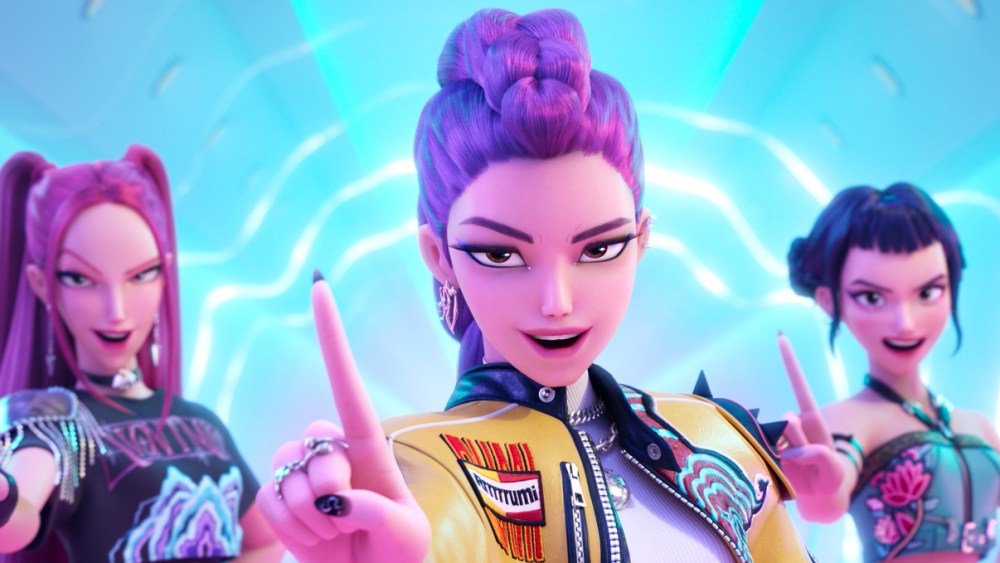TURIN, Italy — A full day at the View Conference in Turin ended with animation directors from DreamWorks, Netflix and Sony Pictures Animation discussing how technology, fan engagement and soul are reshaping how stories are made and shared.
Moderated by Dan Sarto, the Future of Storytelling panel featured Pierre Perifel (“The Bad Guys 2”), Maggie Kang and Chris Appelhans (“KPop Demon Hunters”), Alex Woo (“In Your Dreams”), Kris Pearn (“The Willoughbys”) and Camille Balsamo-Gillis, co-founder of Pro Machina.
Game Engines Change the Game
For these storytellers, real-time technology is rewriting the grammar of animation.
“Cameras have always been a character, now we can actually manifest that very quickly,” said Pearn, describing how Unreal Engine has transformed production speed and flexibility.
Kang said her “KPop Demon Hunters” team expected to use Unreal for only a small portion of the film. “We were told we’d only use 20% of the movie that way, it ended up being all of it,” she said. “You’re able to shoot coverage you were never really able to do before.”
Balsamo-Gillis, whose company specializes in miniatures and practical effects, urged a balance between physical and digital. “There are still a lot of practical solutions,” she said. “There’s something unmatched about working with a physical, real asset.”
Perifel agreed: “If ‘F1’ wasn’t shot the way they shot it, driving actual cars, that movie wouldn’t be what it is. You can see it on screen.”
A Music Industry Moment?
Appelhans compared today’s animation landscape to music’s digital revolution.
“It’s analogous to what’s happened in the music industry,” he said. “Billie Eilish and her brother started out without a huge label, making music that found an audience on Spotify. We may see animation have its own music moment, undercutting the old production model in interesting ways.”
He said streaming and new platforms have lowered barriers for smaller teams “with talent and dedication to find an audience” — much like musicians started doing 15 years ago online.
Fans Are Your Marketing Team
“KPop Demon Hunters” cultural takeover offered a real-world example of fan-driven success.
“Our core audience were teens to early 20-somethings and they’re content makers,” said Kang. “They marketed the movie. It created a global buzz you could never get with staggered theatrical releases.”
Appelhans added, “You would see fan made content and then you would see the studio put promotional work out there, and for whatever reason, the audience aren’t so sure, they can smell it… fans started owning your movie… it’s more raw and persuasive.”
Woo called that two-way exchange essential to the next phase of storytelling. “Part of the future of storytelling is interaction with the fan base, a conversation happening between creators and audiences,” he said.
Animation Remains a Medium, Not a Genre!
Woo said younger audiences no longer see animation as “for kids” like many older audiences stubbornly do.
“Every time I talk to young people, they don’t see animation or cartoons as for children,” he said. “They’ve experienced stories that are broader in tone and theme. Those barriers don’t exist for them anymore.”
Perifel pointed to anime’s influence: “In Japan, animation is for everybody. It’s a Western reflex — maybe even more American than European — to think of it as children’s entertainment,” he said. “In animation, you can really do whatever you want. That’s what makes it exciting for the next generation.”
Paying Attention to Where Audiences Are
Audiences haven’t disappeared, rather they have dispersed and fragmented into a myriad of content silos.
“Cable was a captive audience,” Pearn said of his early years in Canada. “That’s gone. Where the audience goes, that’s what we have to pay attention to.”
He warned that while monetization remains difficult, the democratization of distribution means “really funny, smart, awesome filmmakers are gonna win.”
The Industry Has Handled Huge Shifts Before
When discussion turned to AI, Pearn recalled earlier upheavals. “Coming up as a 2D animator, I saw {Autodesk} Maya take most people’s jobs, half the studio was gone,” he said. “We can only look to ourselves as creatives to push back.”
Others echoed that sentiment while differentiating human creativity from automation. “It’s like the iPhone camera; everyone has one, but most of what’s made no one watches,” said Woo. “It’s not the tool, it’s how you use it.”
Perifel agreed: “AI doesn’t speak to any of us. What connects people is the human voice behind the work.”
The loudest applause went to Chris Applehans who described the human labor generative models have trained on to give them their abilities as “one of the greatest acts of shoplifting you’ll ever see in human history. And so even an AI tool that’s helping you rotate a drawing into a 3D model is using the last 40 years of CG modellers who developed those abilities? It [the model training] just took all that and swallowed it all,” before continuing “and it doesn’t belong to these companies, and they’re so excited for us to move past that and just start talking about what the tool can do. But the truth is that that is the theft of millions of artists and their work. In my opinion, there needs to be a much more responsible reckoning of how that has happened, and how people can be remunerated for it. And then it will be a lot more comfortable to go forward with this as a tool. Just synthesising a century or two of humans figuring stuff out, but you can’t just steal that shit and then move right on.”
There was mutual belief that storytelling talent will find a way to be found and still succeed but it’s clear the route and the methods may change.
“Art is something unique to human beings because it comes from the soul,” Woo said to close the session. When asked where she sees herself in 10 years, Kang smiled: “I’d like to just keep making weird things and putting weird stuff on screen.”
